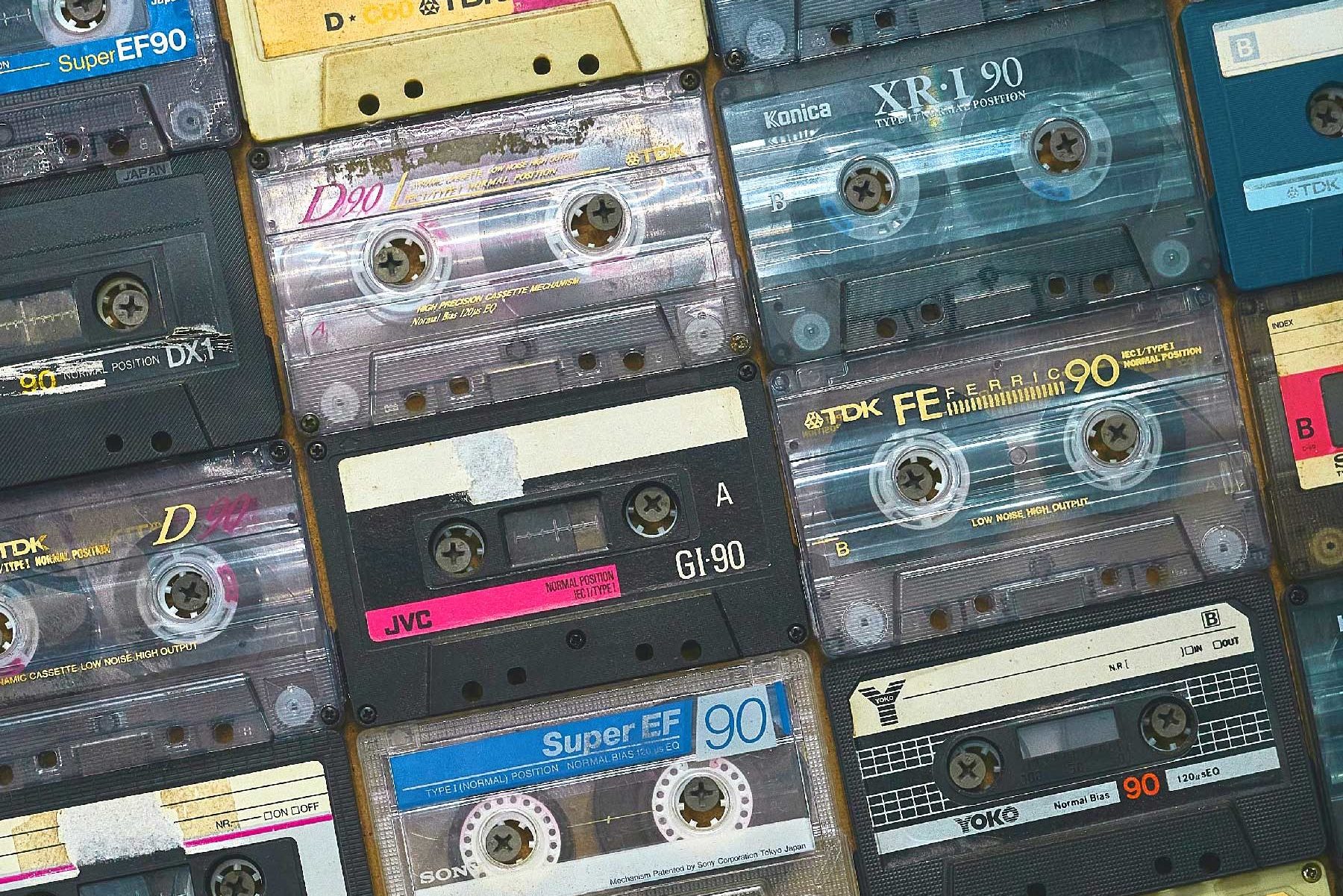Cassette Tapes
We love cassette tapes. They’re a great way to enjoy and collect music. The cassette tape is also a piece of history and their look is an icon that brings up a lot of nostalgia for decades past like the 70s and 80s.
Cassette Tape History
Cassettes were invented by Lou Ottens and his team at the Dutch company Philips in 1963. The intent was to create a replacement for the old reel-to-reel audio tapes. The cassette tape would be much smaller, more compact, and easier to play, and transport. This was all possible due to the tape being significantly thinner (approximately an 1/8 inch wide) as well as being able to write an audio signal across less tape.
The tape is wound around to tiny spools. The spools are kept inside a small plastic case, that prevents the tape from becoming more easily damaged when compared to a reel-to-reel system. Simply put the cassette tape is a smaller all around tech, that was better protected and easier to transport than it’s predecessor the reel-to-reel tape system.
How Does a Cassette Tape Work
Cassette tapes have a couple of stereo or mono audio tracks available on the tape. A stereo or mono track is played (or recorded on) when the tape is moving one direction. The other tracks are played or recorded on when the tape is moving in the other direction. When you flip a cassette tape over, you’re effectively changing the direction of tht tape!
The tape on a cassette tape is made of a polyester-type plastic film with a magnetic coating. A cassette tape starts out as a blank demagnetized tape on two spools. The tape is then magnetized as it’s run through a recording process at a constant speed. After recording, the magnetized tape has data stored on it. In most popular cases this data is MUSIC!
Playback of a cassette tape is performed by a tape player. The tape can be played back because tape players have a player head which is capable of reading the magnetized tape as it passes by. The player head moves ever so slightly due to the magnetic waves recorded on the tape. It’s kind of similar to how a turntable stylus or needle moves on a record, but instead of grooves in a record it’s a magnetically charged strip of tape. While reading the tape, players then reproduce the original signal that was recorded on the tape.
